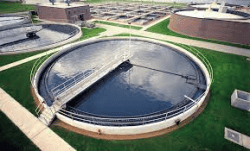So what exactly happens at a water treatment facility? First, let’s define wastewater. This is wastewater that originates from homes and factories.
The wastewater then goes through a secondary treatment process to remove up to 85% of organic matter. This step is commonly known as an activated sludge process. This process involves pumping wastewater into a tank that contains a large amount of chlorine. Chlorine kills harmful bacteria and eliminates the odour of wastewater. After this process, wastewater flows back to the sedimentation tank for further treatment. Valves play an essential role in the treatment process. For a Valve Manufacturer, contact orseal.com/
After coagulation, the wastewater is treated with a chemical called sodium hypochlorite. The coagulants in the water will cause the fine particles to clump together. During this step, the water will undergo another process called sedimentation, which will separate the solids from the liquid. During sedimentation, the natural sediment will sink to the bottom of the water. After treatment, the wastewater will be released into the waterways of the community.
The next step in water treatment is aeration. Aeration helps replenish the oxygen in the wastewater and keeps the organic matter suspended in the water. It also forces grit and sludge to settle out. This process also creates carbon dioxide and methane gases that are used to heat the treatment facility. After this step, the wastewater will enter a settling tank known as a digester.
Surface water is water that collects on the ground in a river, lake, or ocean. Ground water, on the other hand, is the water that collects below the earth. Different communities require different types of treatment, depending on the quality of the source water. Surface water typically needs more treatment than groundwater because it contains more sediment, germs, and chemicals. This waste water can be recycled or sold to be used as fertilizer.
Water pollution is a mixture of non-point and point sources. Non-point sources include sediment, nutrient runoff, and pesticides. In industrial waste, there are two types of pollutants: point sources and dispersed sources. Point sources are pollution that has reached the water from a single pipeline or channel. Dispersed sources, on the other hand, are generally from a large unconfined area. Farm waste, fertilizers, and pesticides are often part of the dispersed source. Urban storm water drainage, on the other hand, carries gritty materials, petroleum residues from automobiles, and road deicing chemicals.
Domestic wastewater is relatively easy to treat. However, emerging contaminants make it a more difficult process. Many chemicals and pharmaceuticals are found in domestic wastewater, and the treatment process is increasingly complicated.


